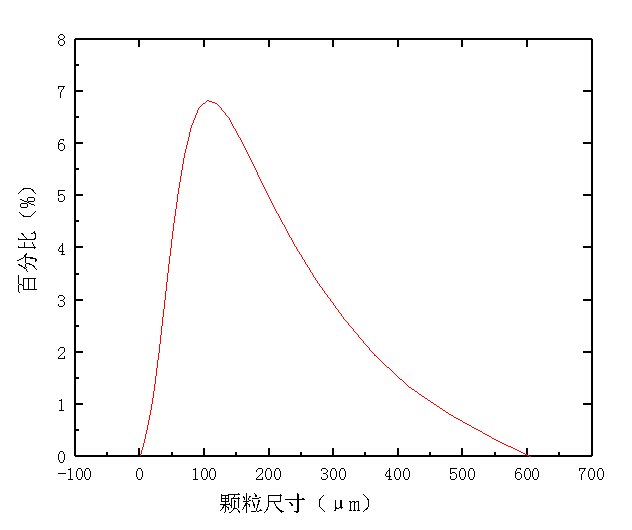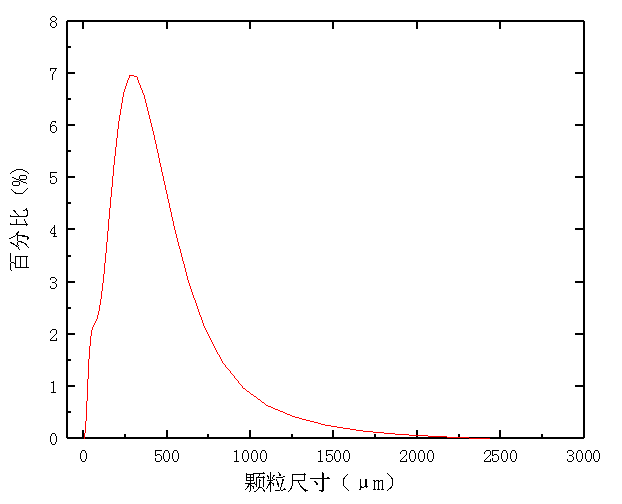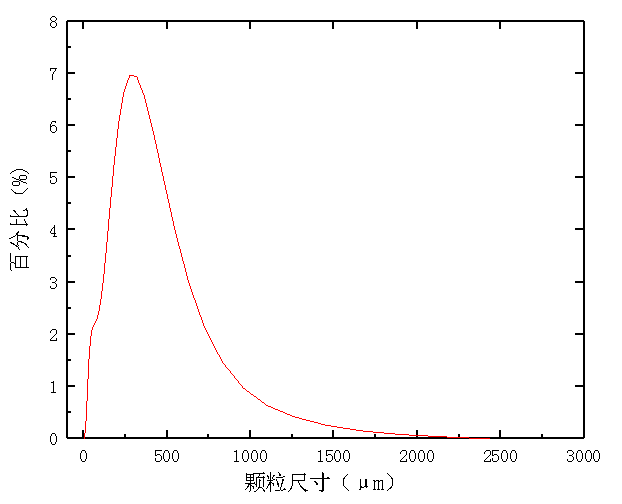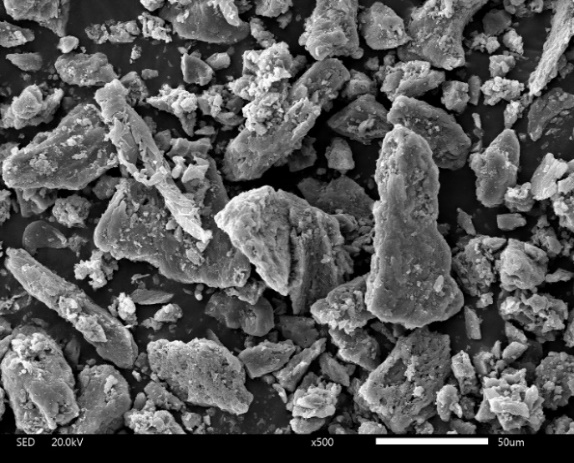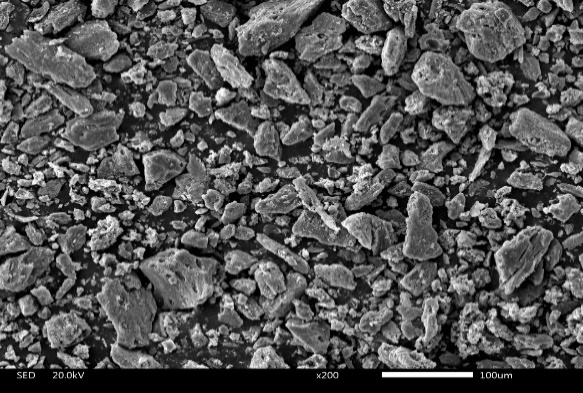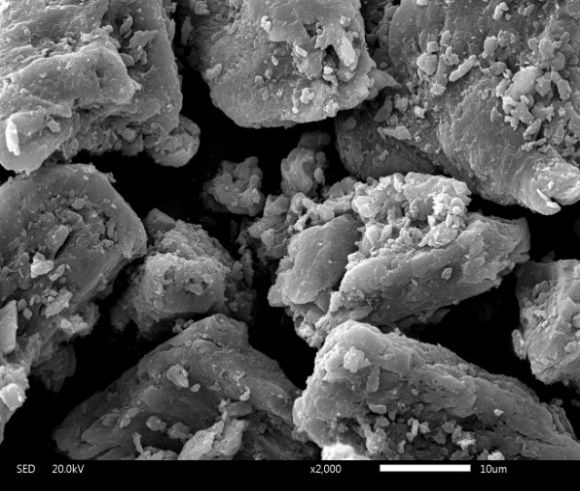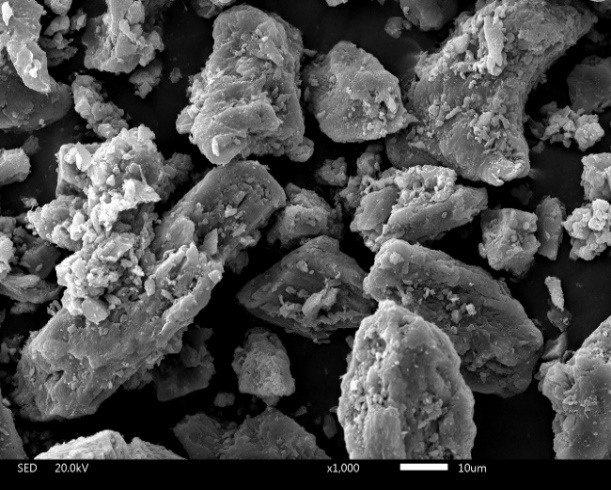生物炭对铅污染土壤的改良研究毕业论文
2020-03-29 12:51:39
摘 要
2000年以来,我国各行业进入了一个飞速发展期,在这一时期我国采矿、化工、冶金等涉及重金属的行业的急速发展。然而这一阶段由于我国对环保等问题认识不足,环保关把持不严,并且相关法律法规没有及时设立,导致我国土壤重金属污染程度不断加剧,规模不断扩大。在2010年以前我国频繁发生群体性铅中毒事件,平均每年达3-5起,涉及人数均达几十人,而且受难人数大部分是儿童。最近几年,人们吸取以前惨痛的教训,环保意识显著增强,社会对环境污染的预防治理也投入了大量资金与人力物力,政府甚至把环保纳入国家发展战略,但是似乎效果没有那么显著。解决环境问题最有效的方法还是发展环保技术。吸附法是一种非常有效并且有良好发展前景的重金属处理方法吸附是一种传质过程,具有大比表面积的多孔材料往往具有较强的吸附能力[1]。根据作用力的不同,其通常包括物理吸附和化学吸附。本研究以鸡骨、咖啡渣为原材料用真空管式炉在500℃下制备出生物炭,通过热重分析(TG-TDA)、粒度分析、元素分析(CHNS)、BET 比表面积(BET)、傅立叶红外光谱(FT-IR)和扫描电子显微镜(SEM)等表征手段分析生物炭的性质;通过盆栽实验培育黄瓜幼苗对比植物来源和动物来源的生物炭对铅的固定作用,对比植物来源和动物来源的生物炭对植物生长的影响以及分析生物炭对土壤肥力的影响。本实验得到以下结论:
(1)从咖啡渣、鸡骨原料的热重分析可以准确地知道鸡骨与咖啡渣在热解过程中发生的物理化学变化。鸡骨为:从50℃到253.79℃ 为第一阶段,该阶段主要是鸡骨当中游离水和吸附水的脱除;从253.79˚C 到 548.04˚C 为第二阶段主要是鸡骨中有机物质和脂肪的热解阶段;从 548.04˚C 到 800˚C 为第三阶段,该阶段主要为无机盐.咖啡渣为:第一阶段为50℃到103℃,即失水阶段;第二阶段是 103℃到224.66℃,即微失重阶段;第三阶段为 224.66℃到465.33℃,即热解阶段;第四阶段为 465.33℃~700 ℃,即炭化阶段。
(2)由粒度分析、SEM电镜扫描知生物质炭颗粒粒度较小,且表面凹凸不平,存在很多凹槽,有较多小孔分布,这些均有利于生物炭颗粒增比大表面积,从而提高其吸附铅离子,以及水土保持、保肥能力。
(3)由鸡骨炭、咖啡炭FT-IR分析可知,生物质炭表面存在的化学基团与其原材料有关,其表面存在的各种官能团通过表面电荷的性质和π电子影响其吸附性。而其表面存在的羧基、磺酸基、氨基、亚氨基和酰胺基等基团则可对细胞的黏附与增殖起促进作用。
(4)由BET比表面积分析,比较植物原料咖啡渣与动物原料鸡骨制成的生物炭的孔径分布、比表面积可知鸡骨炭的比表面积更大,孔径更小,部分孔径接近于微孔大小,从而可以推测动物原料制成的鸡骨炭吸附固定作用更强。
(5)通过测量培养后各不同处理盆栽的pH可知,生物炭本身是微碱性的,而且加入的生物炭具有稳定的微化学性质以及强大的保水保肥能力,可以保持土壤微碱性,从而土壤pH可以长期保持,降低铅离子的影响。
(6)对比各盆栽幼苗前后生长状况知,加入了骨炭的幼苗生长最为快速健康;加入了铅离子的盆栽幼苗生长较为缓慢,而且叶片发黄;加入咖啡炭、鸡骨炭,生物炭对重金属起固定作用,可以降低铅离子对植物生长的影响
关键词:生物炭,铅吸附,土壤改良,废物利用
Abstract
Since 2000, various industries in China have entered a period of rapid development. During this period, China's mining, chemical, metallurgical and other industries involving heavy metals have developed rapidly. However, at this stage, due to the lack of understanding of environmental protection issues in China, the lack of strict environmental protection regulations, and the lack of timely establishment of relevant laws and regulations, the pollution of soils in China has continued to increase and the scale has continued to expand. Before 2010, there were frequent incidents of group lead poisoning in China, which averaged 3-5 cases per year. The number of people involved reached dozens of people, and most of the victims were children. In recent years, people have learnt from previous painful lessons, their environmental awareness has been significantly enhanced, and society has invested a great deal of funds, manpower and material resources in the prevention and treatment of environmental pollution. The government has even included environmental protection in its national development strategy, but it seems that the effect is not so significant. The most effective way to solve environmental problems is to develop environmental technologies. Adsorption is a very effective and promising method for the treatment of heavy metals. Adsorption is a mass transfer process. Porous materials with large specific surface areas tend to have strong adsorption energy, and usually include physical adsorption and Chemical adsorption. In this study, biochar was prepared from chicken bones and coffee grounds using a vacuum tube furnace at 500°C, analyzed by thermogravimetric analysis (TG-TDA), particle size analysis, elemental analysis (CHNS), BET specific surface area (BET), and Fourier analysis. Infrared spectroscopy (FT-IR) and scanning electron microscopy (SEM) were used to characterize the properties of biochar. The cultivation of cucumber seedlings was compared with the source of the plants by potted soil culture experiments. The immobilization effect of animal-derived biochar on lead, the effect of biochar from plant sources and animal sources on plant growth, and the effect of biochar on soil fertility The following conclusions were obtained in this experiment:
(1)From the thermogravimetric analysis of coffee grounds and chicken bone raw materials, we can accurately know the physical and chemical changes that occur during the pyrolysis of chicken bones and coffee grounds. The chicken bone is the first stage from 50°C to 253.79°C, which is mainly the removal of free water and adsorbed water from the chicken bone; from 253.79 ̊C to 548.04 ̊C, the second stage is mainly organic material in the chicken bone. And the fat pyrolysis stage; from 548.04 ̊C to 800 ̊C is the third stage, which is mainly inorganic salt. The coffee slag is: the first stage is 50°C to 103°C, ie the water loss stage; the second stage is 103 °C to 224.66 °C, that is, the micro weightlessness phase; the third phase is 224.66 °C to 465.33 °C, the pyrolysis phase; the fourth phase is 465.33 °C to 700 °C, the carbonization phase.
(2) Particle size analysis and SEM scanning revealed that the particle size of the biomass carbon is small, and the surface is uneven. There are many grooves and there are many small pore distributions. These are favorable for the bio-char particles to increase the specific surface area, thereby increasing the Adsorption of lead ions, as well as soil and water conservation and fertilizer retention.
(3) The FT-IR analysis of charcoal charcoal and coffee charcoal shows that the chemical groups existing on the surface of biomass carbon are related to its raw materials. The various functional groups present on the surface of the biomass charcoal affect its adsorption properties through surface charge properties and π electrons. The carboxyl group, sulfonic acid group, amino group, imino group, and amide group present on the surface thereof can promote the adhesion and proliferation of cells.
(4) From the BET surface area analysis, comparing the pore size distribution and specific surface area of biochar made from plant raw coffee grounds and animal raw chicken bones, the specific surface area of chicken charcoal is larger, the pore size is smaller, and the partial pore size is close to the pore size. Therefore, it can be speculated that the adsorption and fixation of chicken bone made from animal raw materials is stronger.
(5) By measuring the pH of various potted plants after cultivation, it is known that biochar itself is slightly alkaline, and the added biochar has stable micro-chemical properties and strong water and fertilizer retention ability, which can maintain the soil slightly alkaline. As a result, the soil pH can be maintained for a long period of time, reducing the impact of lead ions.
(6) Compared with the growth status of each potted seedling, the growth of seedlings with bone charcoal was the fastest and the most healthy; the potted seedlings with lead ions added grew more slowly and the leaves yellowed; coffee charcoal, chicken bone charcoal, and biochar fixed the heavy metals Effects can reduce the impact of lead ions on plant growth
Keywords: biochar, lead adsorption, soil improvement, waste utilization
目 录
摘要 I
Abstract II
第一章 绪论 1
1.1食品安全 1
1.1.1造成食品铅污染的原因 1
1.1.2铅对人类健康的影响 1
1.1.3土壤铅污染 2
1.2生物炭的特性 3
1.2.1生物炭的定义 3
1.2.2活性炭的性质 3
1.3咖啡渣、畜禽骨利用现状 4
1.4研究的基本内容及技术方案 5
1.4.1研究目标 5
1.4.2研究内容 5
2.1实验试剂 6
2.2实验设备仪器 6
2.3实验原料与生物炭性质表征 7
2.3.1实验原料与生物炭表观和显微结构分析 7
2.3.2实验原料与生物炭的元素成分分析 7
2.3.3实验原料的综合热分析 7
2.3.4生物炭官能团及结构分析 8
2.4盆栽实验 8
3.1实验原料分析 10
3.1.1原料的化学组成 10
3.1.2原料的热重分析 10
3.2生物炭的制备 12
3.2.1原料的预处理 12
3.2.2原料的炭化 12
3.3原料及生物炭的表征 12
3.3.1原料和生物炭的粒度分析 12
3.3.2生物炭的元素分析 14
3.3.3原料和生物炭的表面的形貌特征 14
3.3.4原料和生物炭的结构特征 18
3.3.5生物炭的傅里叶红外变换光谱分析 20
3.4本章小结 22
第四章 不同原料生物炭对土壤中铅的吸附 24
4.1吸附后土壤铅浓度 24
4.1.1原子吸收光谱仪检测铅离子浓度 24
4.1.2全谱直读等离子体发射光谱仪检测铅离子浓度 24
4.2吸附后土壤傅里叶红外变换光谱分析 26
4.3本章小结 29
第五章 动植物原料对土壤肥力的影响 30
5.1、对土壤Ph测定 30
5.2植物生长状况分析 30
5.3本章小结 32
第六章 结论与相关建议 33
6.1研究结论 33
6.2相关建议 34
参考文献 35
致谢 37
第一章 绪论
1.1食品安全
“民以食为天,食以安为先”,食品是人类生存的根本,人类必须通过营养的获取来得生命的延续,食品更会对人类的身体健康可以产生重要影响。但是随着人类社会的发展,科学技术的进步,各种化工产品大量生产并被用于食品行业,再加上水污染、大气污染、土壤污染等环境污染问题的加剧导致人类食品被污染的可能性增大。从生产食品的原材料到加工、储存、运输、销售、食用等所有渠道度可能造成食品污染,这使食品安全问题更加突出。食品的安全问题也慢慢地被人们的重视,近几年来网络不断曝光了较多的食品安全问题,包括添加剂违规、餐桌污染、食品中毒等。重金属污染是对人类健康威胁最大的十大污染物之一,在食品安全检测中重金属含量检测是一项很重要的指标[2]。
1.1.1造成食品铅污染的原因
以上是毕业论文大纲或资料介绍,该课题完整毕业论文、开题报告、任务书、程序设计、图纸设计等资料请添加微信获取,微信号:bysjorg。
相关图片展示:
